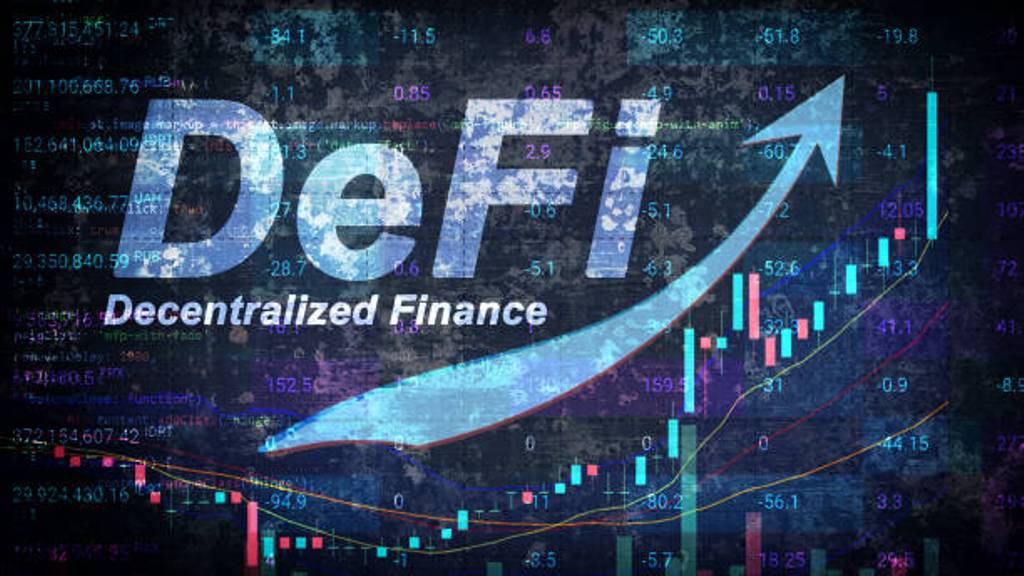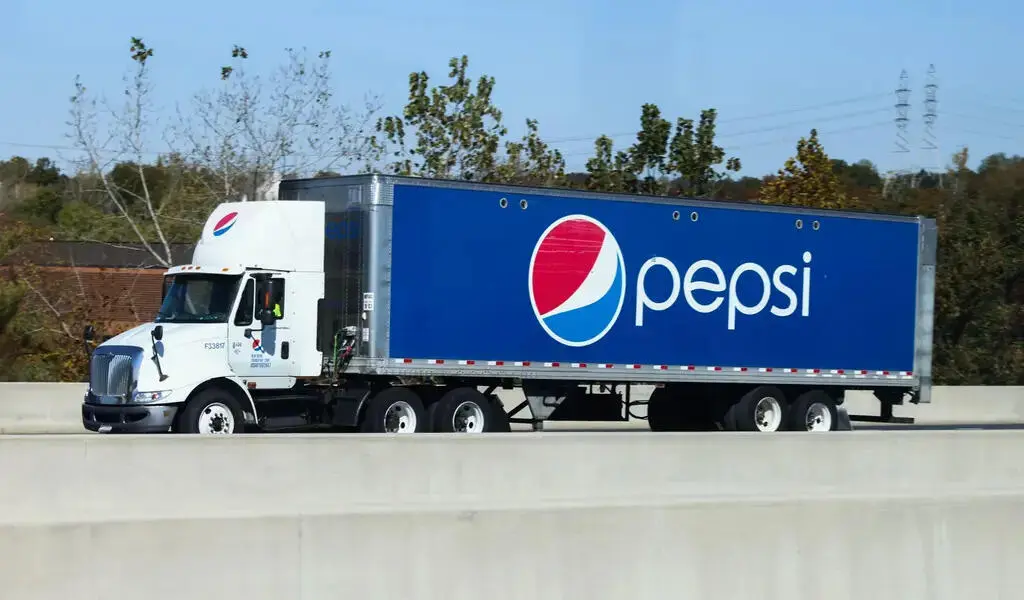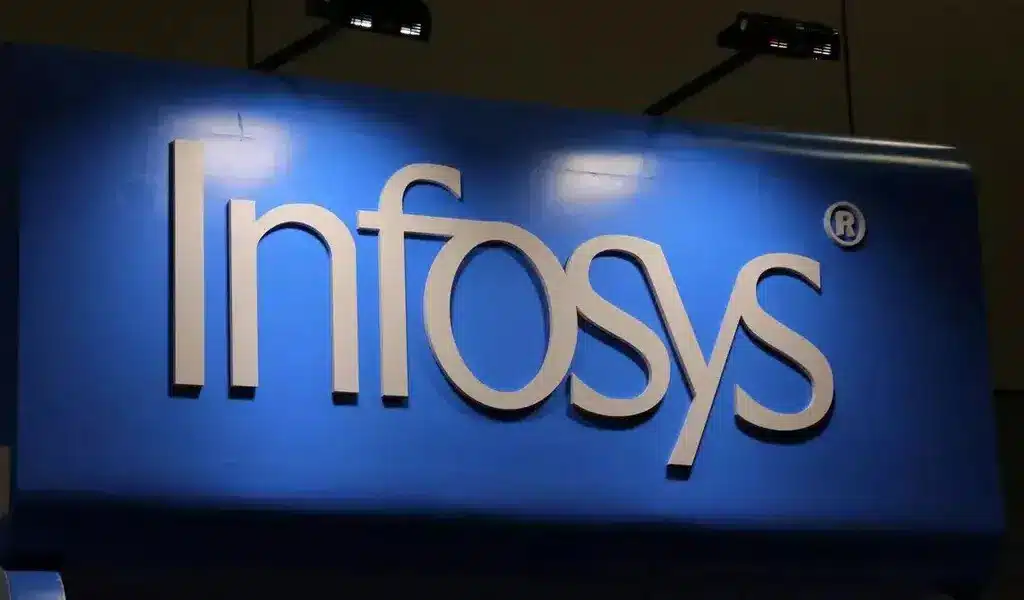Business
How Decentralized Finance DeFi Paves the Way for Financial Inclusion

According to the World Bank’s report from 2017, approximately 1.7 billion people worldwide don’t have a bank account today. Not having access to this fundamental financial instrument is the main factor that stops them from realizing certain everyday functions. However, decentralized finance (DeFi) was created to meet all the requirements and demands of traditional banking — security, privacy, and accessibility — in a new way.
By transferring financial operations onto the blockchain, people will only need a smartphone or portable PC and a stable Internet connection to access the global financial system 24/7. How’s that for a step in the right direction?
In this article, you’ll discover how the current worldwide financial inclusion works, what DeFi is, why it’s the best choice for banked and unbanked people to manage their money, and how you can start investing in the space.
The Current Financial Inclusion Situation Worldwide
Individuals and enterprises who are financially included have access to financial goods and services that fit their requirements — transactions, payments, savings, credit, and insurance — offered by big institutions with all their benefits and drawbacks.
Access to a bank account in the current financial system is the first step toward economic development since it allows people to store their money safely. However, a bank account’s most crucial function is to be the portal to other financial services.
For nations where 80% or more of the population has bank accounts, the next phase is to transition from account access to account usage (China, Kenya, India, and Thailand). These nations depended on reforms, private-sector innovation, and a drive to build low-cost accounts, including mobile and digital payments.
Everyone Needs Financial Non-custodial Services
The four main reasons why people can’t have a bank account are as follows:
- Lack of access to nearby banks / mobile phone
- Minimum balance fees
- Distrust of the banking system
- No access to government-issued ID

Unbanked Needs DeFi Now
These four causes are still valid in developing countries. Most people who need financial tools (a loan, for example) usually get that money from friends or family simply because the bank requirements are unattainable.
The lack of long-term financial system policies that guarantee digital and physical infrastructure to attract telecommunications and banking investments makes opening and maintaining a bank account a script for a fiction movie in developing countries.
However, it’s not that rosy in the developed world either. For example, the Federal Reserve estimated in 2019 that approximately 63 million people don’t have a bank account.
Therefore, unbanked people in every country of the world desperately need a much simpler, secure, and private financial alternative. Decentralized finance is establishing itself as the best answer to grant anyone access to a DeFi Wallet24/7.
Banked People Also Need DeFi
According to MyBankTracker, these are the top 10 most common bank complaints:
- Excessive / hidden fees
- Bad customer service
- Check/funds essential bouncing
- Expensive debits charged first
- Loyalty means nothing
- Mortgage / loan issues
- Huge errors/mistakes
- Bad branch experiences
- Difficult for small businesses
- Failing to honor their promises.
As you can see, people complain because they want to have minimally fair conditions to manage their money with transparency and security. Unfortunately, however, banks have often failed to provide such guarantees.
On average, compared to others, banked people may be more likely to discover the different decentralized finance platforms that exist right now on the market and therefore be encouraged to use them for their financial transactions despite the UX difficulties that exist nowadays.
In other words, most people who currently use traditional financial services worldwide are not happy with their banks’ financial tools, making them a vital sector that also needs DeFi services to manage their money more securely and privately.
But, what is DeFi all about? How can anyone start investing in the DeFi sector now? Keep reading to find out.
What Is Decentralized Finance (DeFi)?
Decentralized Finance (DeFi) is a blockchain-based type of finance that uses smart contracts on blockchains, the most common of which is Ethereum based on ERC20 Tokens, to supply traditional financial instruments instead of relying on central financial intermediaries such as banks.
People can use decentralized finance platforms to lend or borrow money from others, trade cryptocurrencies, insure themselves against risks, and earn income in savings accounts.
This financial sector was born in 2009 when bitcoin was created. Then ICOs, which were one of Ethereum’s first major use cases, became popular in 2017.
Since 2018, concepts like “liquidity mining pools” and “automated market makers” were introduced, which made many DeFi initiatives develop new tools like collateralized lending, borrowing, and yield farming, among others.
On the other hand, even though decentralized finance became popular in 2020, making Ethereum the only blockchain that supported DeFi tools, numerous cheaper and faster alternatives have emerged since then (for example, Binance Smart Chain). Nowadays, these two blockchains are the most used networks for developing DeFi initiatives.
However, people worldwide do not have access to this revolutionary technology in the numbers we’d like to. That’s why Eidoo’s non-custodial wallet is the perfect way to get onboard.
Why Eidoo Wallet Is the Best Way to Start in DeFi
Eidoo is a non-custodial multi-asset wallet that allows worldwide users to manage more than 500 ERC20 Tokens, Litecoin, and Bitcoin securely and privately, having an in-app integration with different DeFi protocols to invest in them directly like for example Compound, AVEE, Uniswap, Balancer, and Curve finance, among others.

With the Eidoo non-custodial wallet, you can store, trade, and swap ERC20 Tokens, avoiding potential risks and unnecessary fees made by internal intermediaries. Also, there are other in-app DeFi services like:
- NFT Manager: Platform inside the Eidoo wallet where you can visualize your NFT collectibles.
- DAO Manager: For people who hold PNT, you can manage your pNetwork DAO votes on this platform.
- Fast SEPA transfer: You can buy ERC20 Tokens with SEPA transfers in hours instead of days.
- eidooCARD: Decentralized payment service built on Layer-2 solution backed by VISA and connected to the Eidoo DeFi Wallet. This crypto card is, therefore, more cost-effective.
The non-custodial crypto ecosystem is making a wide range of financial instruments more accessible to anyone — now is the time to grab these opportunities and make the best use of them.

Business
PepsiCo Reduces Revenue Projections As North American Snacks And Key International Markets Underperform.

(VOR News) – In the third quarter of this year, Pepsi’s net income was $2.93 billion, which is equivalent to $2.13 per share. This was attributed to the company.
This is in stark contrast to net income of $3.09 billion, which is equivalent to $2.24 per share, during the same period in the previous year. The company’s earnings per share were $2.31 when expenses were excluded.
Net sales decreased by 0.6%, totaling $23.32 billion. Organic sales increased by 1.3% during the quarter when the effects of acquisitions, divestitures, and currency changes are excluded.
Pepsi’s beverage sales fell this quarter.
The most recent report indicates that the beverage and food sectors of the organization experienced a 2% decline in volume. Consumers of all income levels are demonstrating a change in their purchasing habits, as indicated by CEOs’ statements from the previous quarter.
Pepsi’s entire volume was adversely affected by the lackluster demand they encountered in North America. An increasing number of Americans are becoming more frugal, reducing the number of snacks they ingest, and reducing the number of times they purchase at convenience stores.
Furthermore, Laguarta observed that the increase in sales was partially attributed to the election that occurred in Mexico during the month of June.
The most significant decrease in volume was experienced by Quaker Foods North America, which was 13%. In December, the company announced its initial recall in response to a potential salmonella infection.
Due to the probability of an illness, the recall was extended in January. Pepsi officially closed a plant that was implicated in the recalls in June, despite the fact that manufacturing had already been halted.
Jamie Caulfield, the Chief Financial Officer of Pepsi and Laguarta, has indicated that the recalls are beginning to have a lessening effect.
Frito-Lay experienced a 1.5% decline in volume in North America. The company has been striving to improve the value it offers to consumers and the accessibility of its snack line, which includes SunChips, Cheetos, and Stacy’s pita chips, in the retail establishments where it is sold.
Despite the fact that the category as a whole has slowed down in comparison to the results of previous years, the level of activity within the division is progressively increasing.
Pepsi executives issued a statement in which they stated that “Salty and savory snacks have underperformed year-to-date after outperforming packaged food categories in previous years.”
Pepsi will spend more on Doritos and Tostitos in the fall and winter before football season.
The company is currently promoting incentive packets for Tostitos and Ruffles, which contain twenty percent more chips than the standard package.
Pepsi is expanding its product line in order to more effectively target individuals who are health-conscious. The business announced its intention to acquire Siete Foods for a total of $1.2 billion approximately one week ago. The restaurant serves Mexican-American cuisine, which is typically modified to meet the dietary needs of a diverse clientele.
The beverage segment of Pepsi in North America experienced a three percent decrease in volume. Despite the fact that the demand for energy drinks, such as Pepsi’s Rockstar, has decreased as a result of consumers visiting convenience stores, the sales of well-known brands such as Gatorade and Pepsi have seen an increase throughout the quarter.
Laguarta expressed his opinion to the analysts during the company’s conference call, asserting, “I am of the opinion that it is a component of the economic cycle that we are currently experiencing, and that it will reverse itself in the future, once consumers feel better.”
Additionally, it has been noted that the food and beverage markets of South Asia, the Middle East, Latin America, and Africa have experienced a decline in sales volume. The company cut its forecast for organic revenue for the entire year on Tuesday due to the business’s second consecutive quarter of lower-than-anticipated sales.
The company’s performance during the quarter was adversely affected by the Quaker Foods North America recalls, the decrease in demand in the United States, and the interruptions that occurred in specific international markets, as per the statements made by Chief Executive Officer Ramon Laguarta.
Pepsi has revised its forecast for organic sales in 2024, shifting from a 4% growth rate to a low single-digit growth rate. The company reiterated its expectation that the core constant currency profitability per share will increase by a minimum of 8% in comparison to the previous year.
The company’s shares declined by less than one percent during premarket trading. The following discrepancies between the company’s report and the projections of Wall Street were identified by LSEG in a survey of analysts:
SOURCE: CNBC
SEE ALSO:
Old National Bank And Infosys Broaden Their Strategic Partnership.
Business
Old National Bank And Infosys Broaden Their Strategic Partnership.

(VOR News) – Old National Bank, a commercial bank with its headquarters in the Midwest, and Infosys, a firm that specializes in information technology, have recently entered into a strategic expansion of their link, which has been in place for the past four years.
This expansion is more likely to take place sooner rather than later, with the likelihood being higher.
For the purpose of making it possible for Old National Bank to make use of the services, solutions, and platforms that are offered by Infosys, the objective of this expansion is to make it possible for the bank to transform its operations and processes through the application of automation and GenAI, as well as to change significant business areas.
This lets the bank leverage Infosys’ services, solutions, and platforms.
Old National Bank Chairman and CEO Jim Ryan said, “At Old National, we are committed to creating exceptional experiences for both our customers and our fellow employees.”
This statement is applicable to Old National Bank. Infosys is carefully managing the business process innovations that it is putting us through, putting a strong emphasis on efficiency and value growth throughout the process to ensure that it is carried out efficiently.
This is a routine occurrence throughout the entire operation. Because of Infosys’ dedication to our development and success, we are incredibly appreciative of the assistance they have provided.
Old National has been receiving assistance from Infosys in the process of updating its digital environment since the year 2020, according to the aforementioned company.
Ever since that time, the company has been providing assistance. The provision of this assistance has been accomplished through the utilization of a model that is not only powerful but also capable of functioning on its own power.
Infosys currently ranks Old National thirty-first out of the top thirty US banks.
This ranking is based on the fact that Old National is the nation’s largest banking corporation.
It is estimated that the total value of the company’s assets is approximately fifty-three billion dollars, while the assets that are currently being managed by the organization are valued at thirty billion dollars.
Dennis Gada, the Executive Vice President and Global Head of Banking and Financial Services, stated that “Old National Bank and Infosys possess a robust cultural and strategic alignment in the development, management, and enhancement of enterprise-scale solutions to transform the bank’s operations and facilitate growth.”
This remark referenced the exceptional cultural and strategic synergy between the two organizations. Dennis Gada is the one who asserted this claim. This was articulated explicitly concerning the exceptional cultural congruence and strategy alignment of the two organizations.
We are pleased to announce that the implementation of Infosys Topaz will substantially expedite the transformation of Old National Bank’s business processes and customer service protocols. We are exceedingly enthusiastic about this matter. We are quite thrilled about this specific component of the scenario.
Medium-sized banks operating regionally will continue to benefit from our substantial expertise in the sector, technology, and operations. This specific market segment of Infosys will persist in benefiting from our extensive experience. This phenomenon will enable this market sector to sustain substantial growth and efficiency benefits.
SOURCE: THBL
SEE ALSO:
American Water, The Largest Water Utility In US, Is Targeted By A Cyberattack
States Sue TikTok, Claiming Its Platform Is Addictive And Harms The Mental Health Of Children
Qantas Airways Apologizes After R-Rated Film Reportedly Airs On Every Screen During Flight
Business
American Water, The Largest Water Utility In US, Is Targeted By A Cyberattack

The largest regulated water and wastewater utility company in the United States stated Monday that it had been the target of a cyberattack, forcing the company to halt invoicing to consumers.
American Water, The Largest Water Utility In US, Is Targeted By A Cyberattack
American Water, based in New Jersey and serving over 14 million people in 14 states and 18 military facilities, said it learned of the unauthorized activity on Thursday and quickly took precautions, including shutting down certain systems. The business does not believe the attack had an impact on its facilities or operations and said employees were working “around the clock” to determine the origin and scale of the attack.

According to their website, American Water operates over 500 water and wastewater systems in around 1,700 communities across California, Georgia, Hawaii, Illinois, Indiana, Iowa, Kentucky, Maryland, Missouri, New Jersey, Pennsylvania, Tennessee, Virginia, and West Virginia.
SOURCE | AP
-

 News3 years ago
News3 years agoLet’s Know About Ultra High Net Worth Individual
-
Entertainment2 years ago
Mabelle Prior: The Voice of Hope, Resilience, and Diversity Inspiring Generations
-

 Health3 years ago
Health3 years agoHow Much Ivermectin Should You Take?
-

 Tech2 years ago
Tech2 years agoTop Forex Brokers of 2023: Reviews and Analysis for Successful Trading
-

 Lifestyles3 years ago
Lifestyles3 years agoAries Soulmate Signs
-

 Movies2 years ago
Movies2 years agoWhat Should I Do If Disney Plus Keeps Logging Me Out of TV?
-

 Health3 years ago
Health3 years agoCan I Buy Ivermectin Without A Prescription in the USA?
-

 Learning3 years ago
Learning3 years agoVirtual Numbers: What Are They For?
